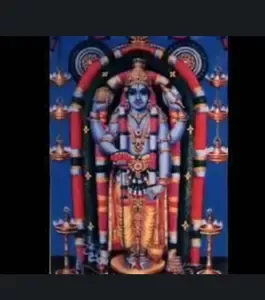
Custom Search
Book Review of The Last White Man
by Ananya Sarkar
(Kolkata, West Bengal, India)
Mohsin Hamid
The Last White Man
Penguin 2022
ISBN 978-0-670-09720-3
Pages 180, Price INR 599
A Fable on Race
A two-time nominee for the Booker Prize (for The Reluctant Fundamentalist, 2007 and Exit West, 2017), Mohsin Hamid's latest novel The Last White Man is a statement on racial and social justice with all its complexities. However, it grapples with the graver issues by infusing existential absurdity that is both discomfiting and impactful at the same time.
The book begins with the central character, Anders, a white man, suddenly turning “a deep and undeniable brown” one morning. Though shocked and panic-stricken at first, Anders’s feelings soon give way to a “murderous rage” whereupon he wants to kill the colored man that stares at him in the mirror.
The abrupt bodily transformation echoes that of Franz Kafka’s Metamorphosis (1915), where Gregor Samsa changes into a monstrous insect without any context. However, in Hamid’s novel, Anders remains a person but nevertheless becomes a wholly different being when his race and identity change.
As the story progresses, Anders’s situation no longer remains a lone aberration. Increasing instances of White people turning dark are reported. The new persons do not undergo a color change alone; they are no longer physically recognizable, which creates not a little turmoil in the society. A sense of wariness and panic sets in as people begin to make bulk purchases and hoard items, as if preparing for an imminent storm. White militants appear on the streets and breakouts of violence turn into full-fledged riots at one point.
Anders initially witnesses “flickers of hostility or distaste” when he goes out but societal paranoia at the widespread change soon leads him to self-confinement and even arming himself with a rifle for protection. But even these measures do not prove to be strong enough as he is eventually forced to evacuate his home by a group of militants.
In the background of such inexplicable events, we see a wild conspiracy theory rise to the surface, interpreting the changes as indicative of a larger plot to wipe out White people. As this gains ground in online forums, the television and radio, there are many ready believers such as the mother of Oona, Anders's girlfriend. She holds that "she was on the inside, among the elect, those who understood the plot...a plot that had been building for years, maybe for centuries, the plot against their kind" (page 49).
The entrenched social prejudices that are often well-hidden in the guise of propriety come to the fore as people change. For instance, it is only after his transformation that Anders becomes mindfully conscious of the Black janitor at the gym where he worked. Though Anders was “nice to him” earlier, he considers
having a proper conversation with him, beyond the superficial patronization.
As the loss of whiteness becomes increasingly uncontrollable, there is mounting desperation for a cure. The path to find the miracle cure leads many to become terribly sick and even die. Eventually, when Anders’s father—the last White man of the book’s title—passes away, the entire town has a Black population. As a grudging peace descends, there is a reckoning of sorts for everyone. The loss of color can be seen as an escape from rigid societal constructs, perceived when Oona muses upon her change:
“…the lightness was stronger than the melancholy, the sense that she was escaping a prison she desired to escape, for her life had become fraught, and for so long there had been no way out, the feeling that there was no way out, but now it seemed that there might be a way out, that she could shed her skin as a snake sheds its skin, not violently, not even coldly, but rather to abandon the confinement of the past, and, unfettered, again, to grow.” (page 123)
The language is lucid, which makes it easy to read. The overtly long sentences seem to be on purpose to give an incantatory feel, moving the reader forward in a compelling way.
The book is, in a way, reminiscent of Eugène Ionesco’s play Rhinoceros (1959) where an increasing number of people start turning into a rhinoceros and José Saramago’s novel Blindness (1995), where the entire city is afflicted by blindness. However, Hamid reinvents the tropes in his own way, exposing the artifices of our conventional perceptions to create a story of hope and social awakening.









